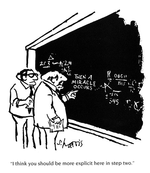Rice:Research: Difference between revisions
No edit summary |
No edit summary |
||
| Line 37: | Line 37: | ||
In recognition of the role of molecular motor transporters in disease, the 2012 Lasker Prize was awarded to Dr. Jim Spudich, Dr. Ron Vale, and Dr. Michael Sheetz. Read about it here:[http://www.laskerfoundation.org/awards/2012basic.htm | <font face="trebuchet ms" style="color:#4B0082"> '''Lasker Award''' </font>] <br> | In recognition of the role of molecular motor transporters in disease, the 2012 Lasker Prize was awarded to Dr. Jim Spudich, Dr. Ron Vale, and Dr. Michael Sheetz. Read about it here:[http://www.laskerfoundation.org/awards/2012basic.htm | <font face="trebuchet ms" style="color:#4B0082"> '''Lasker Award''' </font>] <br> | ||
==Kinesin Tail Architecture== | |||
Kinesin-1 tails have multiple binding partners. The binding sites for several tail binding partners, including kinesin-1 heads, microtubules, Fez1, and RanBP2 overlap significantly, but there is no structural homology between any of these proteins. The tail is not simply a non-specifically “sticky” scaffold either. Kinesin auto-inhibition depends on a single tail residue (K922), and two tail residues (N910 and M911) mediate RanBP2 specificity for the Kif5B and 5C isoforms of kinesin-1. How could the tail have overlapping binding sites for multiple, highly distinct partners and yet retain such exquisite specificity? Our lab’s recent data indicates that the kinesin-1 tail is not globular as the field has presumed, but rather is an intrinsically disordered domain (IDD). Our experimental data on the kinesin-1 tail supports predictions by a number of in silico disorder prediction algorithms. For more details and references, read Mark Seeger's paper: [http://onlinelibrary.wiley.com/doi/10.1002/prot.24128/suppinfo | <font face="trebuchet ms" style="color:#4B0082"> '''Seeger Proteins''' </font>] <br> | |||
</div> | </div> | ||
Revision as of 14:19, 15 May 2013
Research Description
Overview
Kinesin tail architecture
Kinesin coordination with other motors and regulators
Regulation of the mitotic kinesin Eg5
Overview
Molecular Motor Proteins
Active transport one of the hallmark processes defining life. Within eukaryotic cells, active transport is driven by a surprisingly small set of molecular motor proteins. There are three broad classes of motors: kinesins, which generally move toward the plus ends of microtubules, dyneins, which move toward microtubule minus ends, and myosins, which move along actin filaments.
Our Focus: How do kinesin motors know what cargo to pick up and where to go?
A single type of kinesin motor performs many different jobs that involve transporting distinct cargoes to specific locations, and kinesins often cooperate with other motors in cargo transport. Our research seeks to determine how different regulators can initiate or stop kinesin-driven movement of specific cargoes in response to particular cellular cues. We aim to understand and to be able to manipulate kinesin-driven cargo movement at the molecular level.
See a video of a kinesin motor moving a cargo along a microtubule in the video here: | Video This video is called "The Inner Life of the Cell", made by Harvard University and XVIVO Animation. It features kinesin from 1:15-1:25. Note that the level of detail is much higher for the “walking” part than for the “cargo-binding” part! That is why we are focusing our attention there.
What happens when kinesin movement goes awry?
The regulatory machinery governing kinesin activity is critical. Mis-regulation of kinesin motors or mis-localization of cargoes has been implicated in diseases such as Parkinson’s, neurofibromatosis, schizophrenia, and Charcot-Marie-Tooth disease. In addition, drug inhibitors of kinesin motors have been proposed as potential anti-cancer therapeutics. Our work may lead to improvements in the development of drug interventions for diseases implicating kinesins.
In recognition of the role of molecular motor transporters in disease, the 2012 Lasker Prize was awarded to Dr. Jim Spudich, Dr. Ron Vale, and Dr. Michael Sheetz. Read about it here:| Lasker Award
Kinesin Tail Architecture
Kinesin-1 tails have multiple binding partners. The binding sites for several tail binding partners, including kinesin-1 heads, microtubules, Fez1, and RanBP2 overlap significantly, but there is no structural homology between any of these proteins. The tail is not simply a non-specifically “sticky” scaffold either. Kinesin auto-inhibition depends on a single tail residue (K922), and two tail residues (N910 and M911) mediate RanBP2 specificity for the Kif5B and 5C isoforms of kinesin-1. How could the tail have overlapping binding sites for multiple, highly distinct partners and yet retain such exquisite specificity? Our lab’s recent data indicates that the kinesin-1 tail is not globular as the field has presumed, but rather is an intrinsically disordered domain (IDD). Our experimental data on the kinesin-1 tail supports predictions by a number of in silico disorder prediction algorithms. For more details and references, read Mark Seeger's paper: | Seeger Proteins
